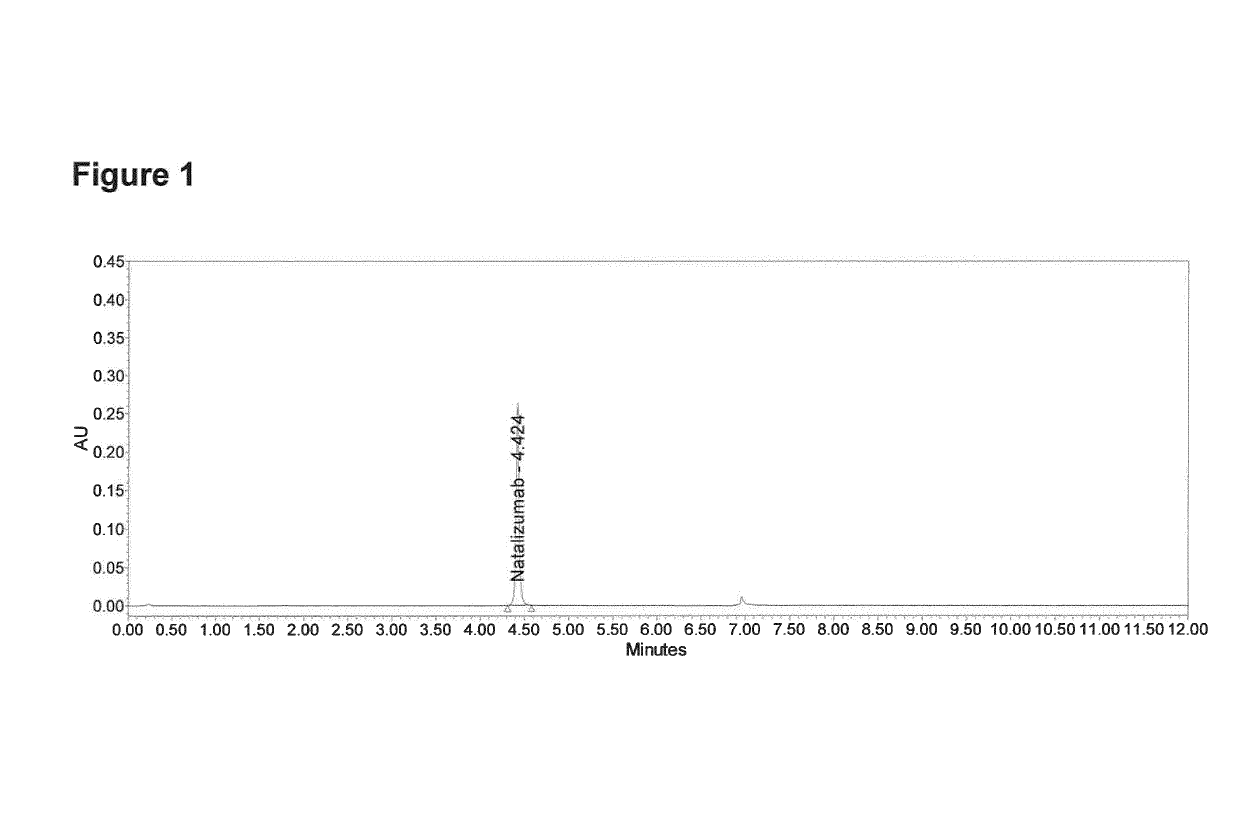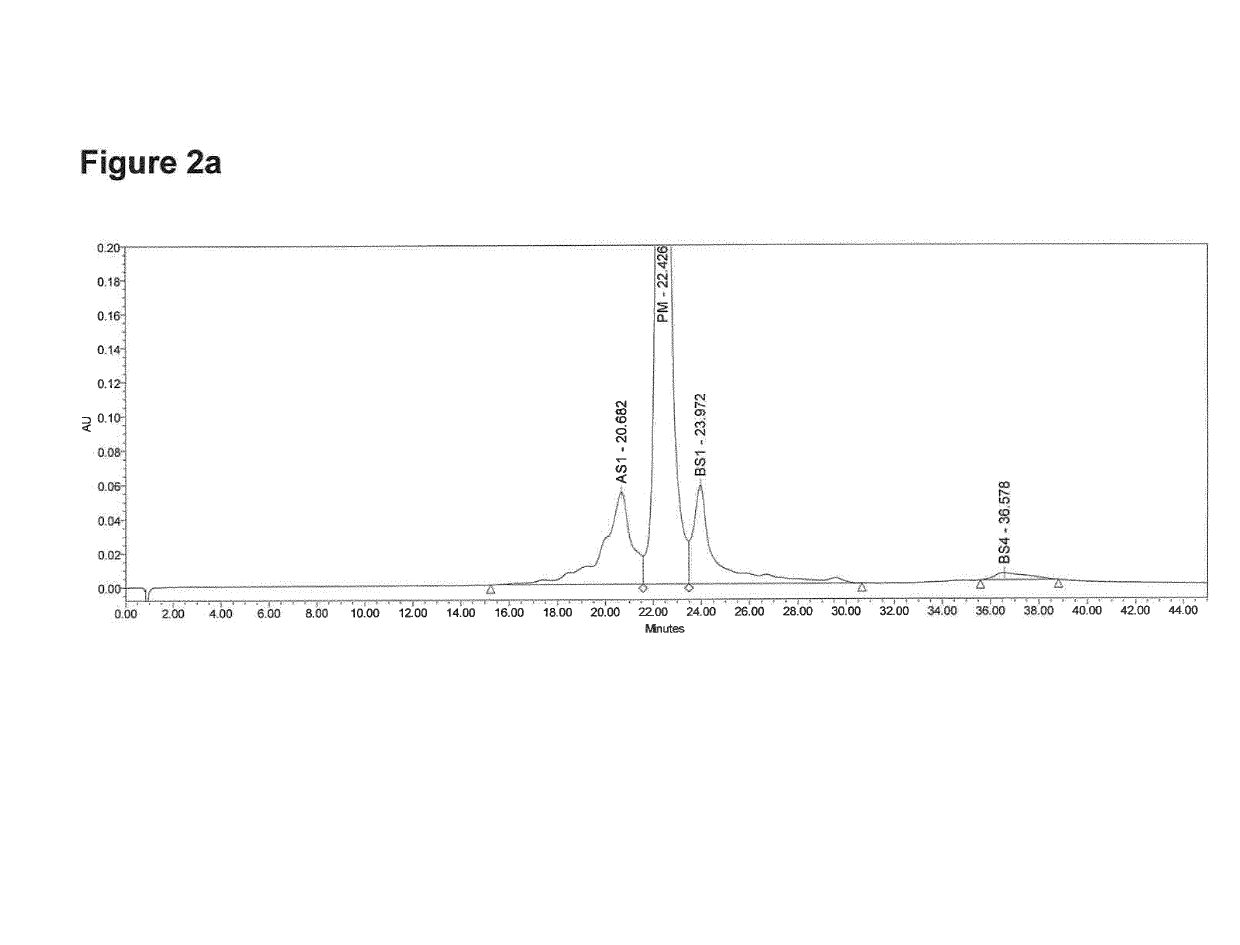Recombinant production of monoclonal antibodies
a monoclonal antibody and recombinant technology, applied in the direction of genital tract cells, peptides, genetically modified cells, etc., can solve the problems of defects in cellular processes, and achieve high peak viable cell concentration, high apical viability, and immunogenicity.
- Summary
- Abstract
- Description
- Claims
- Application Information
AI Technical Summary
Benefits of technology
Problems solved by technology
Method used
Image
Examples
example 1
Development
[0114]An expression construct was generated based on a standard expression vector. The vector comprises two expression cassettes encoding the light and heavy chain of natalizumab, respectively. See also SEQ ID NO: 2 and SEQ ID NO: 4 above. The plasmid further contains a dihydrofolate reductase gene as a selection marker. Cloning of the expression vector was performed using molecular biological standard techniques. Plasmid DNA was prepared and verified by transforming competent E. coli cells and preparation of mini prep DNA (PureLink HiPure Plasmid Filter Maxiprep Kit) from a correct clone which was obtained during the molecular cloning procedure. Verification was by both restriction analysis and sequencing.
[0115]This expression construct was linearized, purified and concentrated by isopropanol precipitation, and used to transfect CHO DG44 host cell line using routine electroporation techniques.
[0116]The cells were subjected to selection and methotrexate (MTX) amplificatio...
example 2
l Antibody (mAb) Concentration (Titer) Analysis
[0120]Chromatographic analysis by Protein A affinity chromatography was carried out on UPLC H-Class Bio System using UV detection under Empower 3 Software control. The Applied Biosystems Poros® Protein A column (20 μm, 2.1 mm i.d.×30 mm) was used for testing applying a two steps of linear gradient of buffer A (50 mM sodium phosphate buffer pH 7.5, 0.15 M NaCl) and buffer B (50 mM sodium phosphate buffer pH 2.5, 0.15 M NaCl). Gradient started with pre-equilibration of 100% buffer A in 0.8 min, then 30% buffer B in 0.1 min was achieved. Elution linear gradient started from 30% to 100% of buffer B in 3.1 min. After elution the column was washed with 100% solvent B for 2 min and re-equilibrated with 100% solvent A. The total run time is 12 min. The flow rate was 0.5 ml / min. The column temperature was 25° C. and elution is monitored at 280 nm. Exemplary chromatogram of test solution is presented on FIG. 1.
[0121]Mab concentration calculation ...
example 3
riants Content by Cation Exchange Liquid Chromatography
[0123]Monoclonal antibodies are subject to post-translational modifications or degradation at several independent sites. Such modifications may result in the presence of many different species in the final product. Monoclonal antibodies therefore display considerable heterogeneity that can be characterized by ion exchange liquid chromatography (IEX-LC).
[0124]The separation was carried out by Cation Exchange High Performance Liquid Chromatography on UPLC H-Class Bio System using UV detection under Empower™ Software control. The Waters Protein-Pak Hi Res SP (7 μm, 4.6 mm i.d.×100 mm) was used for testing applying a linear gradient of NaCl. Eluents were: buffer A (10 mM NaPi buffer pH 6.0) and buffer B (10 mM NaPi buffer pH 6.0, 0.125 M NaCl). Gradient starts with pre-equilibration of 100% buffer A in 5 min. Elution gradient starts from 10% to 30% of buffer B in 25 min min, followed by a washing step for 5 min at 30% B and re-equil...
PUM
| Property | Measurement | Unit |
|---|---|---|
| concentration | aaaaa | aaaaa |
| concentration | aaaaa | aaaaa |
| temperature | aaaaa | aaaaa |
Abstract
Description
Claims
Application Information
 Login to View More
Login to View More - R&D
- Intellectual Property
- Life Sciences
- Materials
- Tech Scout
- Unparalleled Data Quality
- Higher Quality Content
- 60% Fewer Hallucinations
Browse by: Latest US Patents, China's latest patents, Technical Efficacy Thesaurus, Application Domain, Technology Topic, Popular Technical Reports.
© 2025 PatSnap. All rights reserved.Legal|Privacy policy|Modern Slavery Act Transparency Statement|Sitemap|About US| Contact US: help@patsnap.com



